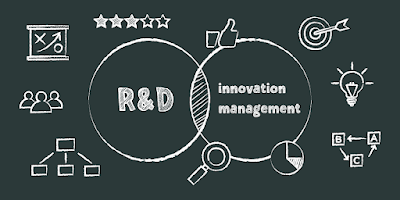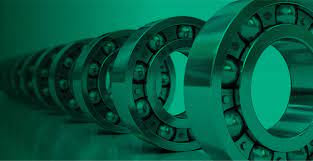Research and development in the bearing industry
The bearing industry has been around for centuries, with continual advancements in materials and design over the years. As the industry continues to evolve, the focus has shifted to developing more innovative technologies that can meet the growing demands of various application. Research and development into the bearing industry is essential for the efficient and effective functioning of the industry. Companies must continually assess available materials and technologies, as well as develop new ways to use existing resources. For example, advancements in robotics and automation have enabled the bearing industry to move away from traditional manual production methods. This shift has allowed companies to produce higher quality, more consistent products at a fraction of the cost. Additionally, research and development in the bearing industry has led to the development of improved materials and coatings, which have enabled bearings to perform better in a variety of applications. Research and development in the bearing industry is an ongoing process, as companies strive to stay at the forefront of the industry.ns. Research and development (R&D) plays a vital role in driving innovation in the bearing industry, as companies invest heavily in developing new and improved products that offer enhanced performance, durability, and reliability. The ultimate goal of R&D in the bearing industry is to deliver products that offer better value to customers, along with improved efficiency and reduced costs. In this blog post, we will take a closer look at the importance of research and development in the bearing industry, highlighting some of the recent advances and innovations that have emerged in this field. We will also explore some of the challenges that companies face when investing in R&D, including funding, market competition, and the need for skilled personnel
1. The importance of research and development in the bearing industry.
Research and development play a significant role in the bearing industry. The bearing industry is highly competitive and requires constant advancements to meet the ever-changing needs and requirements of modern machinery. R&D enables manufacturers to stay ahead of the curve by designing innovative products that provide superior performance and durability. Without research and development, the industry would not be able to keep up with the rising demand for bearings that can withstand higher stresses and temperatures, offer better lubrication, and provide longer service life. Additionally, research and development in the bearing industry also creates opportunities for new and improved manufacturing processes, contributing to better quality products and increased cost-effectiveness. In conclusion, research and development play a critical role in the bearing industry, enabling manufacturers to stay competitive and meet the ever-growing market demands.
2. New materials and designs for bearing components.
Research and development in the bearing industry has led to exciting new advances in materials and designs for bearing components. One area of focus has been the development of new materials that offer increased durability and resistance to wear. Ceramic materials, for example, have been shown to offer greater strength and wear resistance than traditional steel components. In addition, advanced coatings and surface treatments can further enhance the performance of bearing components, protecting them from corrosion and other forms of damage. Alongside these advances in materials, designers are also exploring new bearing designs and configurations that can improve performance in specific applications. These include customized bearing geometries, as well as specialized lubrication systems and sealing mechanisms that can improve durability and reduce friction. Together, these new materials and designs promise to improve the reliability and longevity of bearings in a wide range of industrial applications.
3. Improvements in manufacturing processes that enhance bearing performance.
In recent years, the bearing industry has witnessed significant advancements in manufacturing processes that aim to enhance bearing performance. With technological breakthroughs in material science and metallurgy, new alloys, and coatings are being developed to improve the wear resistance of bearings, reduce friction, and extend their lifespan. For instance, the use of advanced lubricants, such as dry lubricants, and coatings, like diamond-like carbon (DLC), has proven to increase bearing durability in harsh operating environments. Additionally, precision grinding and finishing techniques have been employed to create smoother surface finishes and tighter tolerances resulting in reduced noise, vibration, and smoother operation of bearings. These improvements have not only increased the quality of bearings, but they also contribute to the overall reliability and efficiency of machinery and equipment in various industries. Continued research and development in bearing manufacturing processes will pave the way for even more advancements and innovations in the future.
4. Advancements in bearing testing and analysis.
Advancement in bearing testing and analysis is an essential aspect of research and development in the bearing industry. Bearings are critical components in almost all forms of machinery and equipment, and their performance and durability are fundamental to the overall performance and efficiency of the system. With the evolution of new manufacturing technologies and the increasing demands for higher precision and accuracy, there is a need for advanced testing and analysis techniques to ensure that bearings meet the exacting requirements of different applications. Some of the recent advancements in bearing testing and analysis include non-contact optical measurement techniques, high-speed data acquisition and analysis, and novel testing methodologies that simulate real-world conditions. These techniques enable manufacturers to detect and address defects and flaws before production, thereby improving bearing quality and reducing the likelihood of premature failures in service. Continued research and development in this area will continue to drive innovation and enhance the performance and reliability of bearings in various industrial applications.
5. Collaborative efforts between industry leaders and academic institutions to drive innovation.
Collaborative efforts between industry leaders and academic institutions have been identified as a critical component driving innovation in the bearing industry. As a result, many companies have established programs to connect with academia, creating an exchange of ideas, innovation and talent to address the challenges and opportunities in the field. These partnerships help support important research and development initiatives, provide exceptional opportunities for knowledge sharing between industries and academic institutions, and offer unique experiential learning opportunities, internships, and career paths for students. This approach to innovation in the bearing industry also strengthens the industry's ability to stay competitive, improve product development, and create innovative solutions to customer needs.
In conclusion, research and development is crucial for the growth and success of the bearing industry. Through innovative designs, materials, and manufacturing processes, bearings are becoming more reliable, efficient, and durable. The future of this industry looks bright with new advancements and technologies that will continue to improve the performance and lifespan of bearings in various applications. As the demand for high quality bearings increases, R&D efforts will play a pivotal role in empowering the industry to meet these demands and stay ahead of the competition.




Megjegyzések
Megjegyzés küldése